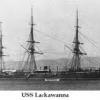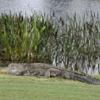-
Posts
3,084 -
Joined
-
Last visited
Reputation Activity
-
 Jaager got a reaction from mtaylor in Admiralty style ship kit
Jaager got a reaction from mtaylor in Admiralty style ship kit
There seems to be a problem with the definition of a few key words.
Admiralty "style" - I used to think this referred to the framing used for late 17 c. RN warship models, here it seems to mean hull only, no or stub masts.
Navy Board - is the 17 c. contemporary or older somewhat stylized framing - with the frames showing.
POF - plank on frame - is the hull fabrication method that mimics the way ships were built. It can be stylized (e.g. Hahn) thru a wide range to an obsessively exact replica of the original. Some degree of stylization helps in making this method approachable.
POB - plank on bulkhead is a popular hull fabrication method for both scratch and kits. The "bulkheads" are actually moulds. They are often spaced far apart and require two layers of planking. They are in no way "frames", although some unscrupulous kit companies will use that term in misleading advertising.
The looks of the underlaying structure requires that it be totally hidden by planking.
I have little expectation that there will be any kits of the quality and nature that you seek. The species and quantity of the wood necessary for the frames and the very high degree of waste and the labor are such that the cost will probably always be impossibly high.
Tom at Cafmodel is working up a first attempt at a POF kit. The framing style seems to be uniquely French for cutter sized vessels.
Your goal is ambitious. POF will probably be strictly a scratch build method for any foreseeable future. There are plans and monographs with lofted frame patterns. These will save considerable time as there can be more than 100 frames to plot.
At 1:48 a liner's hull can easily be 4-5 feet long.
-
 Jaager got a reaction from Canute in Frigate vs. Sloop
Jaager got a reaction from Canute in Frigate vs. Sloop
Sloop is an ambiguous type designation. The vessel in Antscherl's book is the 18th century version.
There is a merchant /civilian vessel type.
In the 19th century - for the USN : Sloop-of-War - the class and distinctions within it 1st class, 2nd class, 3rd class based on size and number of guns.
They were also termed corvettes - there may have been a size distinction to which were called corvette. Corvettes were also a creature of the 18th century.
The defining characteristic was that they carried their guns on one deck. In general, the number of guns was 16-20. As the 19th century progressed, some or most had a spar deck. A sort of roof over the gun deck that made it easier to manage the rigging. No guns and not much of a bulwark.
A frigate carries guns on two levels (decks). There may only be 2-4 guns on the quarterdeck, but that makes it a frigate.
As the 19th century progressed, some frigates had their 2nd level guns removed, the upper bulwarks cut down, and perhaps the beams replaced using less substantial ones - to become razee corvette.
The RN changed the sparring on some of their brigs - Cruzier's were a subject for this. The main and fore masts were made less lofty and a full mizzen mast was added. For some reason they were called brig sloops. Though born brigs, they were now ship rigged and the same size as Sloop-of-War.
-
 Jaager reacted to Bob Cleek in Thinning Contact Cement
Jaager reacted to Bob Cleek in Thinning Contact Cement
If you haven't already, try 3M disk adhesive, sold in auto body and fender supply houses. (If they still make it. Every time I try to buy something useful her in CA, it seems they've outlawed it!) It comes in applicator bottles, "toothpaste" tubes, and aerosol cans. It's made to easily clean off sanding pads with acetone. It does get a bit tenacious when it's been sitting for a long time, though. It may be hard to come by these days, though. Everybody seems to have gone to adhesive-backed pre-cut disks and hook and loop. Cutting your own out of sandpaper bought by the 100 sheet sleeve is way cheaper than hoop and loop!
-
 Jaager got a reaction from Canute in Thinning Contact Cement
Jaager got a reaction from Canute in Thinning Contact Cement
I found the MDS
the solvent seems to be:
Section 3 - Composition /
Information On IngredientsChemical NameCASRN
Wt%
Toluene 108-88- 3 15-40
Acetone 67-64-1 15-40
Light aliphatic solvent naphtha 64742-89-8 7-13
n-Heptane 142-82- 5 5-10
Methylcyclohexane 108-87- 2 0.5-1.5
They do not even have a fixed ratio, just a range
It is a proprietary mixture (?) so no off the shelf solvent. Reads like some nasty stuff to breathe.
The adhesive is a rubber derivative
I have a home made thickness sander from very old NRJ plans - 11" Maple drum and used this stuff to fix the 11x9 sheet of abrasive medium. It is a job the remove and clean. Naphtha will cause it to unstick and roll into balls but still a lot of work to remove. Mineral spirits will loosen it -- eventually. No solvent have I found.
My Byrnes replacement, although 6" instead of 11", is magnitudes faster and easier to replace the media on.
If you must use it, it looks to me as though you are limited to buying the smallest size container and pitching it when it evaporates too much carrier solvent.
With straight up Best Test or Elmer's rubber cement, you can buy Bestine - n-Heptane - in pints or quarts - but this stuff looks no go.
-
 Jaager got a reaction from Canute in Byrnes machinery dust collection
Jaager got a reaction from Canute in Byrnes machinery dust collection
There are reducers for the hoses.
I saved a lot of time and bother dealing with clogged shopvac filters by using an in-line cyclone trap. The thickness sander generates impressive volumes of dust. I use it and the tablesaw in the garage.
The work done on the disk sander is more finesse than volume so I use small portable hand vac (stairs, corners, furniture, type) - a visible chamber for collection rather than a bag.
-
 Jaager got a reaction from mtaylor in Mistake in my kit??
Jaager got a reaction from mtaylor in Mistake in my kit??
Do yourself a favor and do a site search for: "topics" and "content titles only" using the single word: Constellation
Read a bit about what this singularly unique kit involves.
-
 Jaager got a reaction from mtaylor in Woodfiller and glue
Jaager got a reaction from mtaylor in Woodfiller and glue
I do not do POB hull assembly, but if the gaps are between the planks of the first layer, why fill them at all? The hull is not meant to float.
If there are flats and hollows, PVA bond thin pieces of wood or veneer to build it out and abrade that down to a fair run.
PVA bonds by assembling chains and tendrils that invade the pores and rough surfaces of wood - as well as twisting around each other.
A surface finished to 100-120 grit seems to be optimal for a good bond. I break my own suggestion because I came to favor 220 grit before I knew better.
-
 Jaager got a reaction from Canute in Power Sander
Jaager got a reaction from Canute in Power Sander
Perhaps exploring these will give you some idea of the tools available for this range of work.
I bought this under a Swedish company's brand name:
King Arthur's© Guinevere© Flexible Shaft
Heavy duty and definitely not cordless
Although the 1/3 HP motor that I use to drive it is CW/CCW - this tool is not engineered for reverse rotation.
There are a variety of disks 1" 2" 3"
It also works with my preferred drums
Peachtree Woodworking Supply Inc
Sleeveless Sanding Drums
This sanding drum design eliminates the need to buy replacement sanding sleeves for your drum sander. Cut and fold any type of sheet sandpaper to size for the particular drum size you're using. A single sheet of sandpaper and instructions are included with each individual drum.
3/4" - 1" - 2" - 3" 2.5" @ Woodcraft
if the rubber pad is removed the 3/4" becomes 1/2"
there is a 3" that is 6" high (the 4.5" high one is a waste)
I made a sanding table to mount these drums ( no oscillating, but everything I use it on has a continuously changing bevel, so I move the work. )
I dislike using sleeves.
Micro-Mark has a line of a German company's DC - corded small hand tools
Micro-Make™ / MicroLux® Heavy-Duty Right Angle Disk Sander / Drill
Works well inside a larger scale hull. pretty powerful, has a chuck that can replace the disk for more tool options.
Micro-Make™ / MicroLux® Palm-Size Belt Sander
It did a job for me very quickly that would have otherwise been slow and difficult. I had to hold it with a piece of wood to stop it throwing the belt.
It is a very aggressive tool.
Micro-Make™ / MicroLux® Orbital Sander Now with Hook and Loop System Sandpaper!
I have it, but have not used it yet. I think I prefer hand sanding for the jobs it would do.
Micro-Make™ 3D Contour Sander
The sander version of a Norelco Triple Header shaver - I did not buy this, I think my uses are too delicate to risk using it.
-
 Jaager got a reaction from Gregory in Woodfiller and glue
Jaager got a reaction from Gregory in Woodfiller and glue
I do not do POB hull assembly, but if the gaps are between the planks of the first layer, why fill them at all? The hull is not meant to float.
If there are flats and hollows, PVA bond thin pieces of wood or veneer to build it out and abrade that down to a fair run.
PVA bonds by assembling chains and tendrils that invade the pores and rough surfaces of wood - as well as twisting around each other.
A surface finished to 100-120 grit seems to be optimal for a good bond. I break my own suggestion because I came to favor 220 grit before I knew better.
-
 Jaager got a reaction from mtaylor in Byrnes machinery dust collection
Jaager got a reaction from mtaylor in Byrnes machinery dust collection
There are reducers for the hoses.
I saved a lot of time and bother dealing with clogged shopvac filters by using an in-line cyclone trap. The thickness sander generates impressive volumes of dust. I use it and the tablesaw in the garage.
The work done on the disk sander is more finesse than volume so I use small portable hand vac (stairs, corners, furniture, type) - a visible chamber for collection rather than a bag.
-
 Jaager got a reaction from allanyed in Mary Day by jdbondy - 1:64 scale (3/16" to 1 foot) - Schooner
Jaager got a reaction from allanyed in Mary Day by jdbondy - 1:64 scale (3/16" to 1 foot) - Schooner
From Meade 1869 "compiled from various standard authorities"
Beam 15' 20' 25'
Floor timbers sided, at least 4.75" 6" 7.25"
Top timbers sided 4" 4.75" 6"
Moulded at cutting down (outer edge of keel/keelson) 6 - 6.25" 7.75-8" 9.25-9.75"
" at middle between keel and waterline 4.5 - 5" 5.5-6" 6.25-7.5"
" at LWL 3.25 - 3.75" 4.25-4.75" 5.5-6"
" at main deck 3 - 3.25" 4-4.25" 5-5.5"
This gives you an idea of what proper scantlings should be.
Looking for room and space - the ASA 1885 rules are 2/3 rds room 1/3 rd space They allow that the final 1/5 of frames at either end can increase the space by 10%.
I would na do this. It will not save you any money and it just confuses things, to no good purpose.
-
 Jaager got a reaction from mtaylor in Mary Day by jdbondy - 1:64 scale (3/16" to 1 foot) - Schooner
Jaager got a reaction from mtaylor in Mary Day by jdbondy - 1:64 scale (3/16" to 1 foot) - Schooner
From Meade 1869 "compiled from various standard authorities"
Beam 15' 20' 25'
Floor timbers sided, at least 4.75" 6" 7.25"
Top timbers sided 4" 4.75" 6"
Moulded at cutting down (outer edge of keel/keelson) 6 - 6.25" 7.75-8" 9.25-9.75"
" at middle between keel and waterline 4.5 - 5" 5.5-6" 6.25-7.5"
" at LWL 3.25 - 3.75" 4.25-4.75" 5.5-6"
" at main deck 3 - 3.25" 4-4.25" 5-5.5"
This gives you an idea of what proper scantlings should be.
Looking for room and space - the ASA 1885 rules are 2/3 rds room 1/3 rd space They allow that the final 1/5 of frames at either end can increase the space by 10%.
I would na do this. It will not save you any money and it just confuses things, to no good purpose.
-
 Jaager got a reaction from mtaylor in Types of Scarphs
Jaager got a reaction from mtaylor in Types of Scarphs
The government shipyards would have been their own world, but with a contract I was thinking private yard. In this situation, I considered that perhaps every component may not have been covered. As time progressed, I suspect that the list grew longer as some less than ethical private builders worked to contract instead of using artful assembly. If I were of a mind to replicate the internal components that are hidden by decking, gratings, and planking, going that far in role playing, I would try to follow artful practice in my shipyard.
..... Expletive!! I guess this means I talked myself into using the elaborate joinery for the main wale used in later era RN ships. Another reason to stay with countries with better timber supplies.
-
 Jaager got a reaction from mtaylor in Types of Scarphs
Jaager got a reaction from mtaylor in Types of Scarphs
From empirical observation, the time and effort involved in fabricating this more expensive join was limited to those parts that were for lateral enforcement and/or vertical load carrying. The strength parts and not the coverage parts. I am thinking wales, clamps, riders (?), beams, spirketting (?). If the strake carried a load, it may have required a scarph instead of a simple butt.
When I first read the title I thought you were aiming at a wider time period coverage. The original meaning described two timbers meeting side to side. The meeting of the first futtock with the floor and second futtock, for example. The description being necessary because in earlier time, these timbers floated between each other. When the framing method changed and made this definition all but moot, the mating of butt ends in the same strake took over the word, it seems.
-
 Jaager got a reaction from mtaylor in Converting scales
Jaager got a reaction from mtaylor in Converting scales
Roger,
OK.
Not knowing what the practicum involves, I was thinking about the actual wood pieces.
-
 Jaager got a reaction from mtaylor in Converting scales
Jaager got a reaction from mtaylor in Converting scales
I would do it 64/76 = 0.84 but for what you want, it is the way that I would approach it. Remember that this is 3D so it is l x 0.84 and w x 0.84 and d x 0.84.
With a digital caliper, it should be no problem doing measurements. It sure beats vernier or going blind using a 1/64" graduated ruler.
Now, the trick is getting stock to match.
Hello Jim Byrnes and if you do that, it is hello dark side (scratch).
-
 Jaager got a reaction from mtaylor in 74 Gun | Ship of the Line - 3rd Rate | Blender
Jaager got a reaction from mtaylor in 74 Gun | Ship of the Line - 3rd Rate | Blender
I do not know if this has been addressed, but I verified with AotS Bellona, the quarter galleries are incorrect.
The sides do not extend to shield the sides of the balcony. It is not a motel balcony where the rooms need visual isolation.
Perhaps some 16th c. and 17th c. had a square ended balcony. When seen from above, it was likely an arc by the 18th c.
And no roof either.
The quarter galleries were mostly the senior officer crappers. I seems that way to be anyway.
-
 Jaager reacted to allanyed in Types of Scarphs
Jaager reacted to allanyed in Types of Scarphs
Jaager,
Wales with anchor stock or similar planking are not really all that difficult at our scales. The fun would be for the clamps on the UD and GD on this model as they are specified as tabled and scarphed hook and butt. THAT is not a fun prospect. I decided to forego the tabling on this model as these will be pretty much closed in and never be seen. Maybe on the next project.
Allan
-
 Jaager got a reaction from allanyed in Types of Scarphs
Jaager got a reaction from allanyed in Types of Scarphs
The government shipyards would have been their own world, but with a contract I was thinking private yard. In this situation, I considered that perhaps every component may not have been covered. As time progressed, I suspect that the list grew longer as some less than ethical private builders worked to contract instead of using artful assembly. If I were of a mind to replicate the internal components that are hidden by decking, gratings, and planking, going that far in role playing, I would try to follow artful practice in my shipyard.
..... Expletive!! I guess this means I talked myself into using the elaborate joinery for the main wale used in later era RN ships. Another reason to stay with countries with better timber supplies.
-
 Jaager got a reaction from Roger Pellett in Converting scales
Jaager got a reaction from Roger Pellett in Converting scales
Roger,
OK.
Not knowing what the practicum involves, I was thinking about the actual wood pieces.
-
 Jaager got a reaction from Kurtis in 74 Gun | Ship of the Line - 3rd Rate | Blender
Jaager got a reaction from Kurtis in 74 Gun | Ship of the Line - 3rd Rate | Blender
I do not know if this has been addressed, but I verified with AotS Bellona, the quarter galleries are incorrect.
The sides do not extend to shield the sides of the balcony. It is not a motel balcony where the rooms need visual isolation.
Perhaps some 16th c. and 17th c. had a square ended balcony. When seen from above, it was likely an arc by the 18th c.
And no roof either.
The quarter galleries were mostly the senior officer crappers. I seems that way to be anyway.
-
 Jaager reacted to allanyed in Types of Scarphs
Jaager reacted to allanyed in Types of Scarphs
Thanks guys, much appreciated.
Jaager, the contracts are relatively detailed in their description of the frames so no issues there. I was only in a quandary regarding the various strakes, specifically the footwaling and GD clamp. The GD is in pieces as it has a clamp and riser. I looked again at the FC and as it is only 25 feet long, a single piece would likely be appropriate.
Just as an FYI, there are 6 strakes of 15" wide footwaling at the wrongheads, with two that are 6" thick lying on the chocking of the floor head and middle futtock, then one 5" on each side, then one 4" on each side. Perhaps the center strakes would be scarphed as they are to reinforce the area of the joints of the frame.
The devil is indeed in the details at times.
Allan
-
 Jaager got a reaction from bruce d in Types of Scarphs
Jaager got a reaction from bruce d in Types of Scarphs
From empirical observation, the time and effort involved in fabricating this more expensive join was limited to those parts that were for lateral enforcement and/or vertical load carrying. The strength parts and not the coverage parts. I am thinking wales, clamps, riders (?), beams, spirketting (?). If the strake carried a load, it may have required a scarph instead of a simple butt.
When I first read the title I thought you were aiming at a wider time period coverage. The original meaning described two timbers meeting side to side. The meeting of the first futtock with the floor and second futtock, for example. The description being necessary because in earlier time, these timbers floated between each other. When the framing method changed and made this definition all but moot, the mating of butt ends in the same strake took over the word, it seems.
-
 Jaager got a reaction from Gregory in Frigate vs. Sloop
Jaager got a reaction from Gregory in Frigate vs. Sloop
Sloop is an ambiguous type designation. The vessel in Antscherl's book is the 18th century version.
There is a merchant /civilian vessel type.
In the 19th century - for the USN : Sloop-of-War - the class and distinctions within it 1st class, 2nd class, 3rd class based on size and number of guns.
They were also termed corvettes - there may have been a size distinction to which were called corvette. Corvettes were also a creature of the 18th century.
The defining characteristic was that they carried their guns on one deck. In general, the number of guns was 16-20. As the 19th century progressed, some or most had a spar deck. A sort of roof over the gun deck that made it easier to manage the rigging. No guns and not much of a bulwark.
A frigate carries guns on two levels (decks). There may only be 2-4 guns on the quarterdeck, but that makes it a frigate.
As the 19th century progressed, some frigates had their 2nd level guns removed, the upper bulwarks cut down, and perhaps the beams replaced using less substantial ones - to become razee corvette.
The RN changed the sparring on some of their brigs - Cruzier's were a subject for this. The main and fore masts were made less lofty and a full mizzen mast was added. For some reason they were called brig sloops. Though born brigs, they were now ship rigged and the same size as Sloop-of-War.
-
 Jaager got a reaction from mtaylor in Frigate vs. Sloop
Jaager got a reaction from mtaylor in Frigate vs. Sloop
Sloop is an ambiguous type designation. The vessel in Antscherl's book is the 18th century version.
There is a merchant /civilian vessel type.
In the 19th century - for the USN : Sloop-of-War - the class and distinctions within it 1st class, 2nd class, 3rd class based on size and number of guns.
They were also termed corvettes - there may have been a size distinction to which were called corvette. Corvettes were also a creature of the 18th century.
The defining characteristic was that they carried their guns on one deck. In general, the number of guns was 16-20. As the 19th century progressed, some or most had a spar deck. A sort of roof over the gun deck that made it easier to manage the rigging. No guns and not much of a bulwark.
A frigate carries guns on two levels (decks). There may only be 2-4 guns on the quarterdeck, but that makes it a frigate.
As the 19th century progressed, some frigates had their 2nd level guns removed, the upper bulwarks cut down, and perhaps the beams replaced using less substantial ones - to become razee corvette.
The RN changed the sparring on some of their brigs - Cruzier's were a subject for this. The main and fore masts were made less lofty and a full mizzen mast was added. For some reason they were called brig sloops. Though born brigs, they were now ship rigged and the same size as Sloop-of-War.







